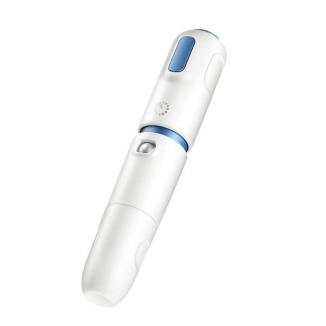Needle-free injectors (NFIs) area revolutionary development in medical technology, offering an alternative to traditional needle-based injections. These devices deliver medication or vaccines through the skin using a high-pressure jet, which penetrates the skin without the need for a needle. While NFIs can reduce needle-associated anxiety, pain, and needle-stick injuries, there are several important factors to consider before starting to use them.
1. Understanding the Technology
Before using a needle-free injector, it is crucial to understand how the technology works. NFIs use a high-pressure system to delivermedication through the skin. This process requires proper training and understanding of the device's mechanics to ensure safe and effective use.
2. Training and Education
Proper training for healthcare providers and users is essential. Training sessions should cover the following aspects:
Device operation: How to load, hold, and operate theNFI.

Safety protocols: Understanding the safety features and how to handle the device to avoid accidents.
Patient preparation: How to prepare the patient’s skin and position the device correctly.
Post-injection care: How to care for the injection site after the procedure.
3. DeviceSelection
There are various types of NFIs available, each designed for specific uses such as insulin delivery, vaccination, or other medications. Consider the following when selecting a device:
Type of medication: Ensure theNFI is compatible with the medication being administered. Dose volume: Choose a device that can deliver the required dose accurately.
Patient demographic: Some NFIs are designed specifically for children, adults, or patients with certain conditions.
4. Cost and Accessibility
Evaluate the cost of the device and its consumables. While NFIs can reduce costs related to needle-stick injuries and disposal of sharps, the initial investment can be significant. Ensure that the device is accessible to those who need it, including availability of replacement parts and technical support. 5. Patient Comfort and Acceptance
One of the primary benefits of NFIs is increased patient comfort. However, patient acceptance varies: Fear of the unknown: Educate patients on the benefits and safety of NFIs to alleviate anxiety.
Perception of pain: While NFIs are generally less painful than needles, some patients might experience discomfort. Address concerns and provide reassurance.
6. Skin Types and Injection Sites
Different skin types and body areas may respond differently to needle-free injections: Skin thickness: Thicker skin may require higher pressure settings.
Injection site: Select appropriate sites on the body to ensure effective delivery of medication.
7. Regulatory Compliance
Ensure that the NFI device is approved by relevant health authorities such as the FDA orEMA. Compliance with regulatory standards guarantees the safety and efficacy of the device.
8. Infection Control
NFIs reduce the risk of needle-stick injuries, but infection control remains important:
Sterilization: Ensure that the device and any reusable components are properly sterilized. Hygiene practices: Follow standard hygiene practices to prevent cross-contamination.
9. Monitoring and Feedback
Implement asystem to monitor the outcomes of needle-free injections:
Patient feedback: Collect and analyze patient feedback to improve the use of NFIs.
Effectiveness: Monitor the effectiveness of medication delivery and adjust techniques as needed. Needle-free injectors offer a promising alternative to traditional needle-based injections, with benefits such as reduced pain and lower risk of needle-stick injuries. However, proper training, deviceselection, patient education, and adherence to safety protocols are essential for their effective and safe use. By considering these factors, healthcare providers can successfully integrate NFIs into their practice and enhance patient care.
Post time: Jul-08-2024
